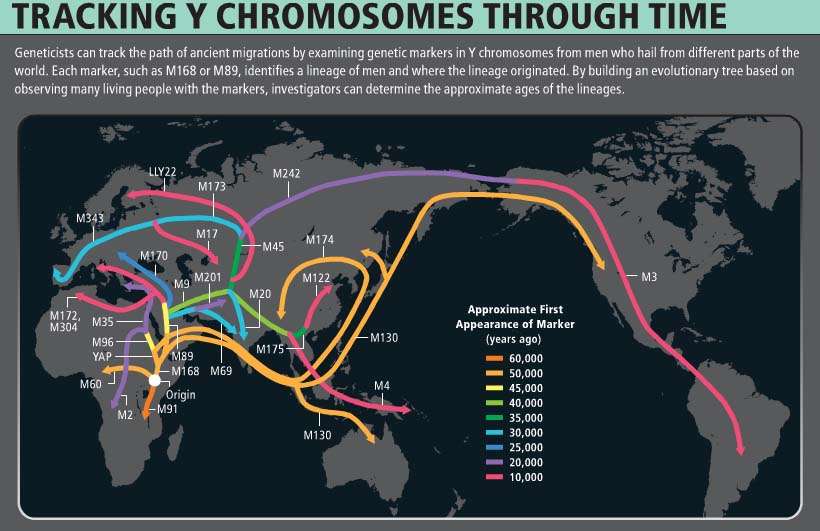Hey, Matt, here's an interesting BBC article from September of 2015 about Basque DNA. (Incidentally, my brother and I used to cut logs with a two-handed saw identical to the Basque "tronza" in the photo below, in the pre-chainsaw era. We used to put bacon grease on the saw blade-- a trick we learned from my grandfather, who owned those old saws at his cabin.)Ancient DNA cracks puzzle of Basque originswww.bbc.com/news/science-environment-34175224 
Two men saw a tree trunk with a "tronza" (traditional Basque saw) during a rural sports championship
September 7, 2016
DNA from ancient remains seems to have solved the puzzle of one of Europe's most enigmatic people: the Basques.
The distinct language and genetic make-up of the Basque people in northern Spain and southern France has puzzled anthropologists for decades.
One theory proposed that they were an unmixed pocket of indigenous hunters.
Now, a study in PNAS journal suggests they descend from early farmers who mixed with local hunters before becoming isolated for millennia.
The Basques have unique customs and a language - Euskera - that is unrelated to any other spoken in Europe, or indeed the world.
Nestled in a mountainous corner of Atlantic Europe, they also show distinct genetic patterns to their neighbours in France and Spain.
It seemed logical that they were representatives of an older layer of population settlement, but just how far back their roots went has been a topic of debate.
Mattias Jakobsson from Uppsala University in Sweden analysed the genomes of eight Stone Age human skeletons from El Portalón in Atapuerca, northern Spain.
These individuals lived between 3,500 and 5,500 years ago, after the transition to farming in southwest Europe.
The results show that these early Iberian farmers are the closest ancestors to present-day Basques.
Go west
Comparisons with other ancient European farmers show that agriculture was brought to Iberia by the same migrant groups that introduced it to central and northern Europe. These pioneers expanded from a homeland in the Near East, sweeping across Europe about 7,000 years ago to usher in the period known as the Neolithic.
Once the farmers settled down, they mixed with local hunter-gatherers - the descendants of people who lived in Europe during the last Ice Age.
Indeed, the El Portalón individuals had more hunter-gatherer ancestry than pioneer farmers from Germany, Hungary and Spain who lived several thousand years earlier.
The new study also goes some way to explaining some of the differences between the Basques and their neighbours in France and Spain.
After the initial farmer-hunter mixture was set, the ancestors of the Basques became isolated from surrounding groups - perhaps due to a combination of geography and culture.
"It's hard to speculate, but we've been working with Basque historians and it's clear from the historical record that this area was very difficult to conquer," Prof Jakobsson told BBC News.
This means the Basque area was largely unaffected by subsequent migrations that shaped genetic patterns elsewhere in Europe.
Migration and isolation
One of these movements occurred in the Bronze Age, when pastoralists from the Steppe - on the eastern periphery of the continent - travelled west en masse. This migration probably spread Indo-European languages across Europe, affecting the central and northern parts of the continent to a greater extent than the south.
While the genomes of French and Spanish individuals showed evidence of this eastern genetic input, those of Basques did not.
Another migration served to further differentiate Basques from their Spanish neighbours. In AD 711, a Muslim army crossed from North Africa into Iberia, beginning an occupation that lasted more than 700 years.
Again, while a small amount of North African and Sub-Saharan ancestry can be detected in the Spanish, it is largely absent from the Basques.
Previous studies have shown that people native to the Italian island of Sardinia are most genetically similar to the pioneer farmers of central Europe.
The Sardinians also became isolated after the agricultural transition, but they lack the additional hunter-gatherer ancestry that characterises the Basques.
Paradoxically, while archaeology shows that Europe's earliest farmers hailed from the Near East, populations living in that region today do not particularly resemble them genetically.
This is because genetic patterns in Turkey and the Middle East were re-shaped by migrations from surrounding areas after the Early Neolithic.
The proportion of hunter-gatherer ancestry varies across Europe, peaking at about 30% in Estonians and Lithuanians, but no "pure" indigenous Europeans remain. They appear to have been assimilated by the Neolithic migrants, who probably had greater numbers.








